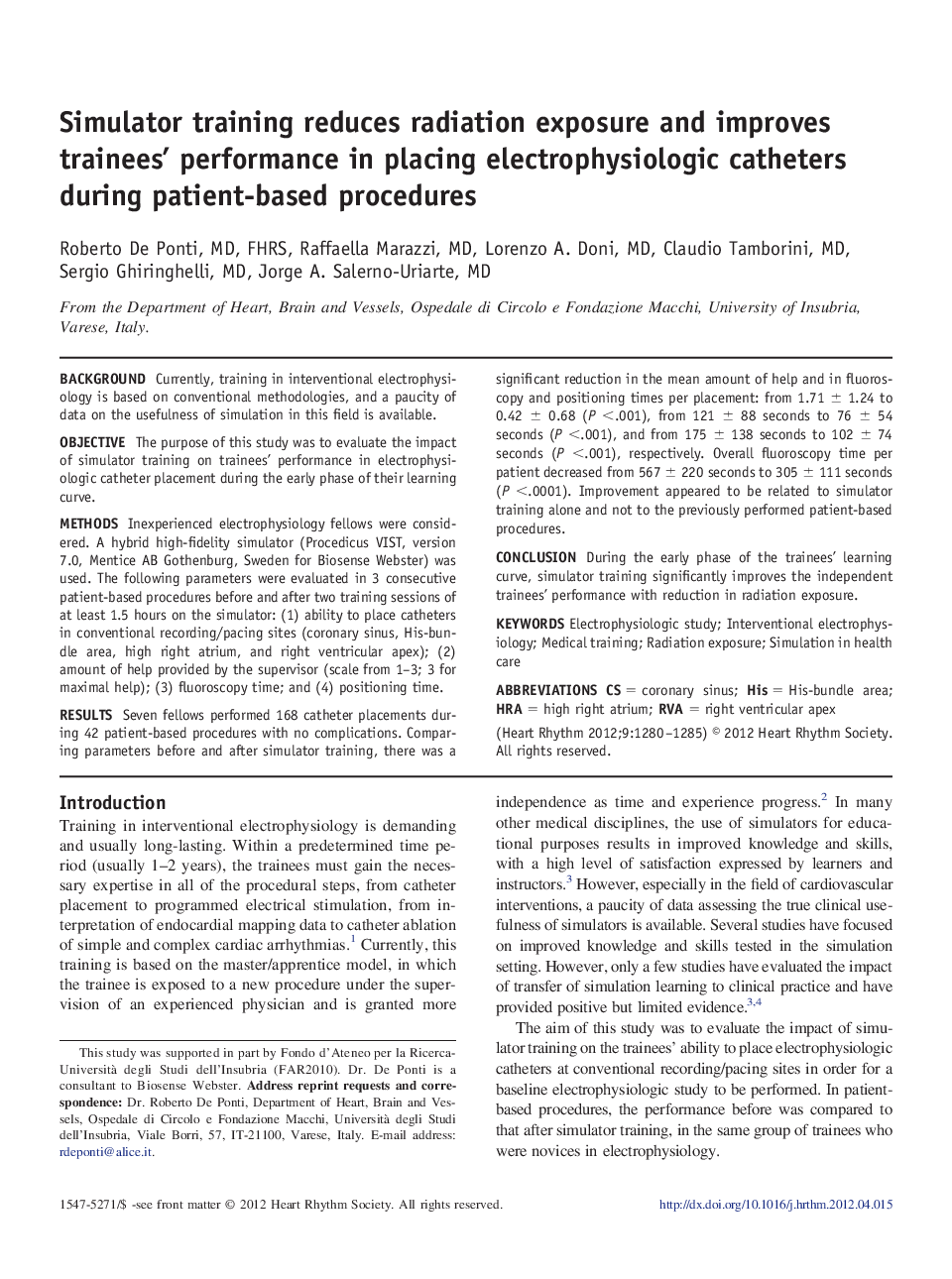| کد مقاله | کد نشریه | سال انتشار | مقاله انگلیسی | نسخه تمام متن |
|---|---|---|---|---|
| 2922728 | 1175854 | 2012 | 6 صفحه PDF | دانلود رایگان |

BackgroundCurrently, training in interventional electrophysiology is based on conventional methodologies, and a paucity of data on the usefulness of simulation in this field is available.ObjectiveThe purpose of this study was to evaluate the impact of simulator training on trainees' performance in electrophysiologic catheter placement during the early phase of their learning curve.MethodsInexperienced electrophysiology fellows were considered. A hybrid high-fidelity simulator (Procedicus VIST, version 7.0, Mentice AB Gothenburg, Sweden for Biosense Webster) was used. The following parameters were evaluated in 3 consecutive patient-based procedures before and after two training sessions of at least 1.5 hours on the simulator: (1) ability to place catheters in conventional recording/pacing sites (coronary sinus, His-bundle area, high right atrium, and right ventricular apex); (2) amount of help provided by the supervisor (scale from 1–3; 3 for maximal help); (3) fluoroscopy time; and (4) positioning time.ResultsSeven fellows performed 168 catheter placements during 42 patient-based procedures with no complications. Comparing parameters before and after simulator training, there was a significant reduction in the mean amount of help and in fluoroscopy and positioning times per placement: from 1.71 ± 1.24 to 0.42 ± 0.68 (P <.001), from 121 ± 88 seconds to 76 ± 54 seconds (P <.001), and from 175 ± 138 seconds to 102 ± 74 seconds (P <.001), respectively. Overall fluoroscopy time per patient decreased from 567 ± 220 seconds to 305 ± 111 seconds (P <.0001). Improvement appeared to be related to simulator training alone and not to the previously performed patient-based procedures.ConclusionDuring the early phase of the trainees' learning curve, simulator training significantly improves the independent trainees' performance with reduction in radiation exposure.
Journal: Heart Rhythm - Volume 9, Issue 8, August 2012, Pages 1280–1285